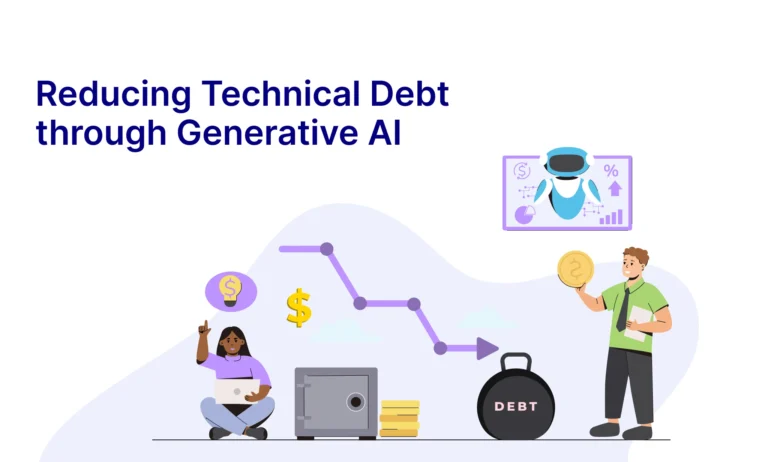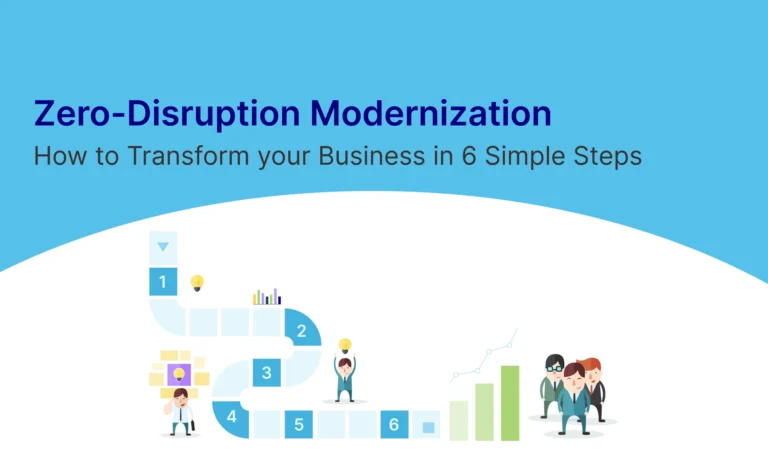Table of Contents
What’s The Difference?
There is more to human-computer interactions than typing code and generating outputs now. The resourcefulness of artificial intelligence (AI) has wormed its way into almost everything—from automating mundane manual tasks to developing content, it has become a trending topic in marketing and business.
A report by CompTIA highlights that over 20% of companies are actively integrating AI into diverse technology products and business operations. Its potential to improve operational efficiency is unparalleled.
In this context, two main AI branches used extensively are Conversational AI and Generative AI.
Both may work in tandem, but they come with their use cases and pros and cons. Understanding these differences is important for business owners, especially for AI software development.
Let’s dive straight in!
A Brief Intro To Conversational AI
Conversational AI helps machines interact with us naturally. Users can easily interact with conversational AI because this technology is designed to engage in human-like, effortless communication.
You have heard of chatbots, virtual assistants, and messaging apps like Alexa, Siri, Bixby, or Google Assistant—these can be categorized as conversational AI.
How it works
Conversational AI learns from real human conversations to understand language patterns and nuances. It first accumulates information from large datasets derived from human dialogues.
Then, it determines linguistic patterns and meanings by implementing techniques like natural language processing (NLP) and machine learning (ML). This enables it to generate appropriate responses during real-time interactions.
And, you know what takes the cake?
With every interaction, conversational AI gets smarter.
It continuously refines its understanding, becoming more adept at engaging in human-like conversations.
An Overview of Generative AI
Generative AI is a type of artificial intelligence that can generate new content, like images, text, or even music, without being given specific instructions for each piece.
Powered by machine learning algorithms and the training data, this form of AI uses neural networks and deep learning to produce new content autonomously.
Some well-known Generative AI examples include ChatGPT, Jasper AI, and Google Bard.
How it works
Generative AI operates by teaching computers to understand patterns in data using neural networks. It further generates new content based on said patterns.
This process involves making predictions about what should come next in the data, creating an output that resembles the original input.
Generative AI for business applications can involve various methods, such as supervised learning, where human feedback helps improve the accuracy of generated content.
It stands out because the model learns from that feedback to improve.
Humans or algorithms check the model’s output to see if it is good enough.
Conversational and Generative AI: Key Differences
Conversational AI and Generative AI serve distinct purposes with unique applications, training methods, and outputs. Each technology has inherent capabilities and features, contributing significantly to how AI will shape the future of business.
The following table illustrates some of the critical differences between Conversational AI and Generative AI:
| Parameter | Conversational AI | Generative AI |
| Objectives and Goals | Focuses on natural and meaningful conversations between humans and machines, enhancing user experiences. | Concentrates on creating content in various forms, such as text, images, music, and videos. |
| Use Cases and Applications | Used for building virtual assistants, chatbots, and other dialogue-based interactions. | Applied in writing works of fiction, generating marketing content, crafting meta descriptions, and more. Generative AI for customer services is also becoming increasingly common. |
| Learning and Training Data | Trained on large datasets comprising human inputs, conversations, user queries, and responses. | Trained on diverse datasets to understand patterns and nuances for generating content with predictive accuracy. |
| Input and Output | Users provide text or voice input, and conversational AI generates responses based on this input. | Uses input data and learned patterns to generate new content, such as text, images, music, or videos, based on the desired application or task. |
Ideally, AI software development uses both conversational and Generative AI. Together, they have the power to enable natural interactions and generate creative and relevant content in various contexts. However, to adopt this hybrid AI model, ensure it is continuously monitored and refined.
| Enrich your product development journey with cutting-edge solutions from Byteridge. <Explore now> |
Which One Should You Choose?
Both Conversational AI and Generative AI have unique strengths and applications. You will need to consider your specific business needs and goals.
Conversational AI can facilitate human-like responses and conversations, making it ideal for applications such as customer service, virtual assistants, and chatbots.
Generative AI stands out for its versatility in content creation. It can generate text, images, music, and videos, making it suitable for tasks that require creativity and originality, such as writing stories or generating visual art.
Generative AI techniques can also indirectly contribute to customer services through content generation (knowledge base articles, FAQs, responses to common queries), personalization of customer interactions, and data augmentation for training purposes.
However, neither are mutually exclusive.
While the choice between Conversational AI and Generative AI may seem daunting, a hybrid approach that combines both can offer a comprehensive solution. When properly implemented and continuously monitored, this approach can provide the best of both worlds, enhancing user experiences and generating creative and relevant content in various contexts.
Let’s take applications like ChatGPT, for instance. They serve as Conversational AI chatbots and Generative AI content creators, integrating both technologies to provide a more holistic and engaging user experience.
Ultimately, the choice depends on the specific requirements and objectives of the project or application at hand.
Why Choosing the Right Development Platform Matters
Technology is now part and parcel of business operations and demands continuous improvement. Whether AI integrations or AI software development technologies, you need to ensure that your technology, both old and new, aligns with your business goals.
We at Byteridge specialize in delivering Gen AI solutions to bring your business to the forefront of innovation.
With esteemed industry giants like Microsoft and Philips among our clientele, we’ve consistently made meaningful contributions to advancing AI, machine learning, and bot development. We offer a comprehensive suite of Gen AI solutions to help you gain a competitive edge in an industry that redefines innovation every step of the way.
| Unlock the potential of your business with Byteridge’s expert-backed Gen AI solutions. <Explore now> |
References:
https://www.techtarget.com/whatis/feature/Conversational-AI-vs-generative-AI-Whats-the-differencehttps://www.hellotars.com/blog/differences-between-conversational-ai-and-generative-ai/#:~:text=Key%20Differences%20between%20Conversational%20AI,designed%20to%20create%20original%20content.








